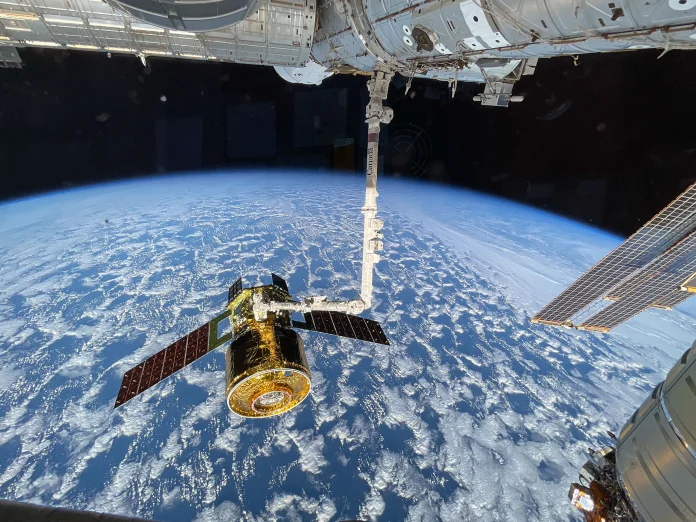
The Expedition 73 crew aboard the ISS dedicated Thursday (13/11/2025) to deep space health and critical medical research on blood circulation in microgravity and essential spacesuit maintenance.
These efforts, combined with installing a new life support system, directly support future deep-space missions to the Moon and Mars
Cardiovascular research and critical spacesuit maintenance dominated the schedule for the International Space Station’s (ISS) Expedition 73 crew this week. The orbital residents focused on studies vital for understanding human health during long-duration space missions, alongside upgrading the essential hardware that supports future spacewalks. This extensive work underscores the crew’s dual role as both advanced researchers and station technicians.
Heart health in microgravity: Deep space health
NASA Flight Engineer Jonny Kim spearheaded a key piece of cardiovascular research in the Columbus laboratory module. Wearing electrodes, Kim used an ultrasound device to scan his chest, providing doctors with valuable data on how the heart’s function and structure adapt to life in weightlessness.
This study is critical for assessing the cardiac risks astronauts will face on future deep-space voyages to the Moon and Mars. Following his research session, Kim adhered to the strict space-fitness regimen, jogging on the COLBERT treadmill and using the advanced resistive exercise device, all while wearing a heart rate monitor to record his cardiac activity.
In the Russian segment, Roscosmos cosmonauts Sergey Ryzhikov and Alexey Zubritsky investigated microcirculation—how blood flows to and from the smallest vessels in the human body. They took turns wearing sensors on their forehead, fingers, and toes to monitor blood flow in the microcirculatory and tissue systems. Understanding these subtle effects of microgravity can help researchers develop protective techniques for long-duration crews, ensuring a safer return to Earth’s gravity.
Roscosmos Flight Engineer Oleg Platonov also contributed to health research by observing the effect of weightlessness and radiation on his blood vessel health.
Spacesuit upgrades and life support tech
Maintenance on essential systems was a high priority, with NASA Flight Engineers Zena Cardman and Mike Fincke teaming up to service a spacesuit inside the Quest airlock. Their work included swapping out a life support device that provides critical ventilation and cooling for spacewalkers. Additionally, they installed a new radio, ensuring reliable communications between the spacewalkers, the crew inside the station, and Mission Control on Earth.
The crew also continued integrating new technology delivered by the JAXA HTV-X1 cargo spacecraft, which arrived on October 29. JAXA Flight Engineer Kimiya Yui spent his day inside the Kibo laboratory module installing a new, advanced carbon dioxide removal system. This technology demonstration is essential for developing highly efficient life support systems, which are necessary to sustain crews on future Artemis missions and beyond.
The daily combination of dedicated research and system maintenance highlights how the Expedition 73 crew is actively safeguarding current operations while simultaneously laying the groundwork for humanity’s next steps into deep space.










